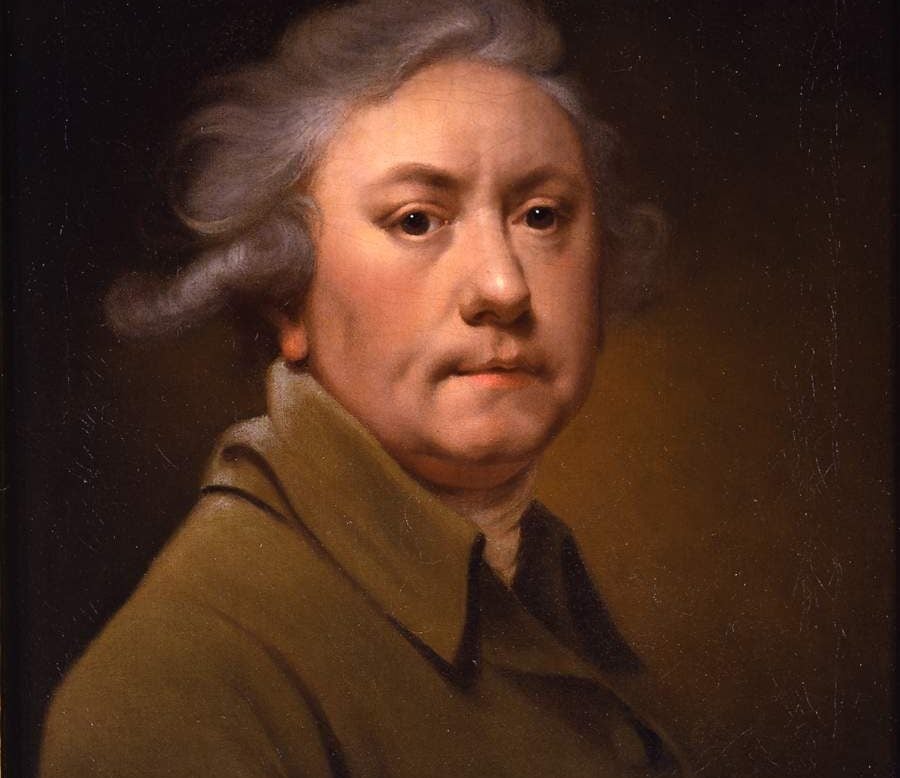
A self-portrait by Joseph Wright of Derby – the artist whose paintings continue to define the industrial revolution in the national imagination – has been discovered after 40 years lost in the shadows and will now be offered for sale, writes Rebecca Morton
A long lost self-portrait by Joseph Wright of Derby will come on the market later this year after being discovered by a London art dealer.
The painting has been believed missing since at least the 1970s, when Benedict Nicholson – author of the definitive work on Derby’s oeuvre – listed its whereabouts as unknown. It was recognised and is being brought to market by Archie Parker, a former senior specialist at Bonhams, who knew of its existence thanks to a copy he had seen earlier in his career.
While Parker chooses to remain circumspect over the precise details of his discovery, he tells Spear’s that the self-portrait was found ‘several years ago’ at an auction ‘in one of the British Isles’.
Having held onto this find in order ‘to keep [it] fresh for the market’ he has brought it to market now because he believes the time is right: ‘There’s not a huge amount of really interesting British portraiture on the market that’s fresh,’ notes Parker. ‘A lot of stuff comes up for auction in London that’s fantastic quality and in great condition but a lot of it’s been seen before or it’s not that rare.’
Which can’t be said for this self-portrait. Painted in 1793 when Wright of Derby was 59, the artwork does display some of his signature use of light and shade, although he is better known for dramatic landscapes and being the first professional artist to depict the Industrial Revolution. Among his patrons were Arkwright and Wedgwood.
Valued at £100,000, the painting will be on sale at Parker’s stand at the annual fair of the Association of Art and Antiques Dealers, LAPADA, in September. This follows the record-breaking price achieved by Derby’s Grotto in the Gulf of Salerno, which fetched £665,000 in aid of Syrian refugees at auction in 2015.
For Parker, though, money is not the main appeal of selling the freshly discovered work of art. ‘For me, the excitement is actually in putting back into place a picture that is thought to have been destroyed or lost,’ he says. ‘It’s not always about the money, it’s about finding something and putting back into history,’ he reflects. ‘Everyone likes a story like this because it shows that there still are discoveries to be made.’
The seasoned discoverer is himself proof of this, having revealed an authentic Stubbs earlier in the year which had previously been dismissed as a fake. That picture – Two Hacks, the property of Henry Ulrick Reay Esq of Burn Hall Co. Durham and their blue-liveried groom in a landscape – was auctioned as a copy at Christie’s for $215,000 and resold by Parker with a profit margin of around £700,000.
Although Parker admits that discoveries like this are not are rare as you might think, with correct attributions and descriptions being lost as they are passed from generation to generation, tracking them down requires long hours of trawling the internet and auctions. While Spear’s readers need not clear space on the wall just yet, they might do well to have another look in the attic.
The Joseph Wright of Derby self-portrait will be sold at LAPADA Art & Antiques Fair, which takes place in Berkeley Square from 15 – 20 September.
Recently
German masterpiece proves not all Turners are equal






